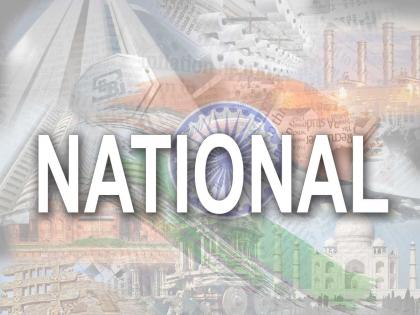Not just rate cut, enhanced public spending to prop-up growth: Experts
By IANS | Published: December 5, 2019 11:42 AM2019-12-05T11:42:06+5:302019-12-05T11:55:18+5:30
Enhanced public spending for infrastructure creation and further dose of economic stimulus by the government would hold the key to accelerate India's GDP growth with further reduction in lending rates and better transmission adding to prop up the general mood and improve overall investment climate in the economy, economy watchers opined.

Not just rate cut, enhanced public spending to prop-up growth: Experts
The suggested steps to infuse vitality into the economy assume significance as India's second quarter FY2019-20 GDP growth rate has fallen to six year low level of 4.5 per cent while inflation is inching up. Other high frequency economic indicators like IIP, core sector, auto sales also continue to paint a dismal picture.
The RBI's Monetary Policy Committee (MPC) will release its resolution on the monetary policy later on Thursday. It is widely expected to cut the key repo rate that should help in bring down the lending rates across the sector while lowering interest rate on home and auto loans.
But experts believe that rate cut is just one aspect and several other measures would be needed to change the mood in the economy. At present, India's economy faces a severe demand slowdown on account of high GST rates, farm distress, stagnant wages and liquidity constraints.
Consequently, all the major sector's including automobile, capital goods, banks, consumer durables, FMCG and real estate have been heavily battered.
In terms of production, the output of manufacturing, mining and electricity generation amongst others have plunged causing job losses.
"RBI may not be able to achieve the desired economic revival only by monetary policy tool. The Government may have to pitch in with further fiscal stimulus, even if it comes at the cost of breaching the budgeted fiscal target," Shishir Baijal - Chairman & Managing Director, Knight Frank India said.
Recently, Finance Minister Nirmala Sitharaman announced several measures to boost the economy, including mega bank merger, sops for the auto along with real estate sectors and reducing effective corporate tax rate to 25.17 per cent (inclusive of all cess and surcharges) from 30 per cent for all domestic companies.
"A counter-cyclical fiscal stance would help alleviate some of the growth pains, with the immediate multiplier effect being higher if its focused on the revenue spending," Edelweiss Securities' Economist Madhavi Arora told .
"However, the extent of growth up-tick owing to higher fiscal spending will be contingent on the extent of deficit slippage."
According to Suman Chowdhury, President-Ratings, Acuité Ratings and Research, public investment would be the key to a quick revival of the economy.
"The fiscal challenges notwithstanding which have further aggravated in a slowdown phase, the government should accelerate its investment plans particularly in the infrastructure sector," Chowdhury said.
"Private investment pick-up will happen only when there is a clear revival in the demand scenario brought about by a sustained step in public capital expenditure."
Nonetheless, the government's tight pursue strings might also hamper the extent to which it can lift growth via enhanced public spending. The fiscal deficit target for 2019-20 has been set at 3.3 per cent of the GDP.
However, persistent spending pressures and slower economic growth are likely to widen the deficit.
"With the government (Centre and States) deficit and borrowing itself running at 8-9 per cent, there is limited headroom from the financial savings of the financial sector," Brickwork Ratings' Chief Economic Advisor M. Govinda Rao, told .
"It will become difficult to reduce the interest rates on corporate borrowings even when RBI reduces the policy rate, the transmission may not take place. It would be more appropriate to fast track government spending through disinvestment proceeds than through additional borrowing from the financial sector."
On lending rates, the Reserve Bank of India's MPC is expected to continue with the accommodative stance by reducing key lending rates during the upcoming monetary policy review slated in December.
In October, the RBI reduced its key lending rate for the fifth consecutive time to 5.15 per cent, the lowest in around a decade, to boost consumption and reverse the slowdown.
( With inputs from IANS )
Open in app